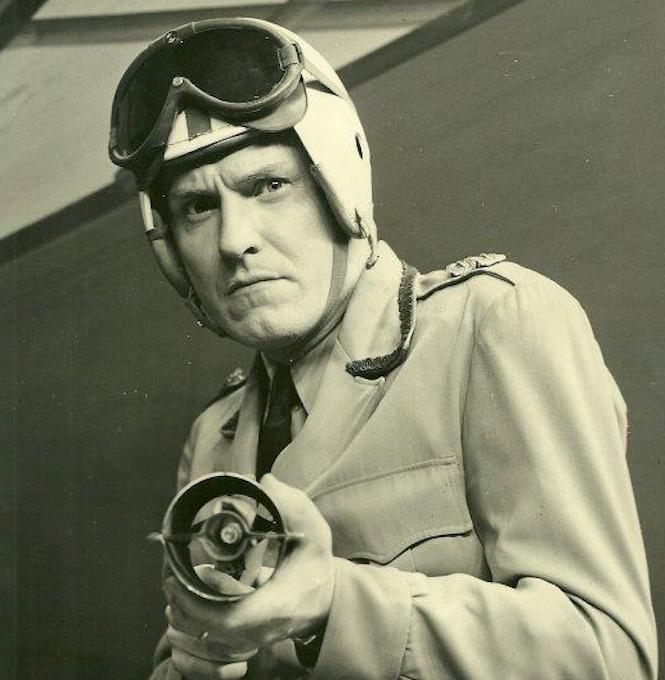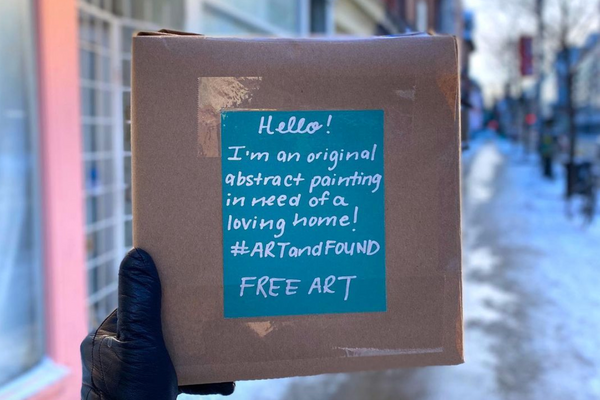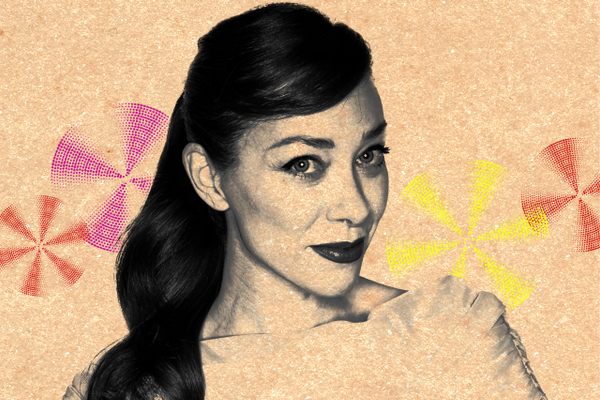Whatever Happened to Captain Video and the DuMont Programming Library?
One of television’s original networks has all but disappeared.

In the age of network television dominance, the concept of a “fourth network” that could challenge ABC, NBC, and CBS seemed almost laughable until FOX hit the scene. But long before FOX was hailed as the true fourth network, there was DuMont, an underfunded and largely forgotten broadcast pioneer whose lost recordings have become the stuff of minor legend.
In an alternate universe, not that different from our own, DuMont would have stood right along CBS and the others as one of the original juggernauts of early television. Debuting in 1946, the network was actually started as a ploy to sell televisions. Before getting into the broadcast game, DuMont Laboratories, the company of inventor and TV tech pioneer Allen B. DuMont, was known for being one of the first firms to manufacture television equipment. Launching their own content factory to fill the screens it was selling must have seemed like a no-brainer.
In the late 1930s, DuMont began experimenting with small TV stations in the New York and Washington, D.C. metro areas. Eventually, they all came together as the DuMont Network, which was officially created in August of 1946. By comparison, NBC and CBS launched around 1940-41, and ABC came on the scene around 1948, putting DuMont smack in the middle of the dawn of television programming.

As an offshoot of an equipment business, the DuMont Network didn’t start with a great deal of money, or on-screen talent, but if anything, this seemed to free up their programming for experimentation. “There was a sense that there were not rules,” says David Weinstein, a senior program officer at the National Endowment for the Humanities and author of The Forgotten Network: DuMont and the Birth of American Television. “At DuMont, where there was no budget, there was a sense that they could experiment formally with some types of camera work, points of view, and perspectives.”
The network developed and produced a variety of shows ranging from early talk shows to inventive crime dramas to ground-breaking science fiction. There was Night Editor, an anthology program where the host, ostensibly the nighttime editor of a newspaper, would narrate and perform stories as though they were requested by viewers. There was the early crime drama The Plainsclothsman, told through the eyes (the camera literally showed viewers his POV) of the titular police officer. And there was Captain Video, often hailed as the earliest science fiction TV show, which followed the low-budget adventures of the Captain and his Video Rangers. DuMont also aired such groundbreaking programs as The Hazel Scott Show, often credited as the first network television show to be hosted by an African-American.
The network offered several shows hosted by the celebrity entertainers of the day, including Ernie Kovacs and Morey Amsterdam. The most successful star to come out of the DuMont era was Jackie Gleason, who developed his career-defining The Honeymooners concept on the variety show he hosted, Cavalcade of Stars.
The DuMont network ran hot and burned out fast. After churning out over 20,000 individual episodes of television over the course of a decade, it shut down. “In 1955 it stopped operating as a network, and the two remaining owned and operated stations were sold to Metromedia in D.C. and New York,” says Weinstein. The newly formed Metromedia company used DuMont’s programming as the base of their business, which was later absorbed by none other than FOX in the 1980s. Despite its influential role in the early days of television, DuMont and its shows were largely forgotten, and worse yet, mostly lost.
Unlike today, when most everything is recorded and then broadcast at a later time, all of DuMont’s programs aired live, and were only occasionally recorded. If one of their programs had to be aired at a different time, or by an affiliate station, it would air via kinescope, which was literally just a recording of a television monitor showing the program. “What that meant was, the DuMont network or the airing station wouldn’t have the kinescope, or need to keep it,” says Weinstein. “It had little or no economic value after the initial broadcast. They may or may not get it back from whatever station happened to show the program, but the quality was so poor, and there wasn’t a demand for a repeat broadcast that there would be no economic value for holding on to them.”
Despite those odds, some of the kinescopes did survive. Most can be found in private collections, or in even stranger places. Weinstein says that over 300 DuMont kinescopes were found in an Iowa popcorn factory after having been kept by one of the network’s make-up artists.
That’s a drop in the bucket compared to the number of shows the network produced. According to a popular myth, this is because the majority of the library was dumped into New York Harbor. This story seems to originate from Ernie Kovacs’ wife, Edie Adams, who told a second-hand story of the kinescopes’ destruction during a hearing on television preservation in 1997. According to her, during DuMont’s sale, nobody wanted to pay for taking care of the recordings, so they were… dealt with:
One of the lawyers doing the bargaining said that he could “take care of it” in a “fair manner,” and he did take care of it. At 2 a.m., the next morning, he had three huge semis back up to the loading dock at ABC, filled them all with stored kinescopes and 2” videotapes, drove them to a waiting barge in New Jersey, took them out on the water, made a right at the Statue of Liberty and dumped them in the Upper New York Bay. Very neat. No problem.
Still, Weinstein is skeptical of this account. To start, Adams stated that the purchase took place in the 1970s, a couple of decades after the network was actually sold. He also just doesn’t think anyone would have kept them around either way. “DuMont was also perennially underfunded. They never had a lot of money, and it’s unlikely they would have kept any sort of warehouse to store these old films,” he says. “They were big, bulky, and take up a lot of space. So the short version is, not a lot survived.”
Weinstein says that at least one example of most of DuMont’s major shows have survived in archived collections at places such as New York’s Paley Center. It’s difficult to say exactly how much has been lost forever. But as Weinstein puts it, that’s also the great thing about early media: you never know where more of it might pop up. “There could always be another popcorn factory in Iowa.”









Follow us on Twitter to get the latest on the world's hidden wonders.
Like us on Facebook to get the latest on the world's hidden wonders.
Follow us on Twitter Like us on Facebook